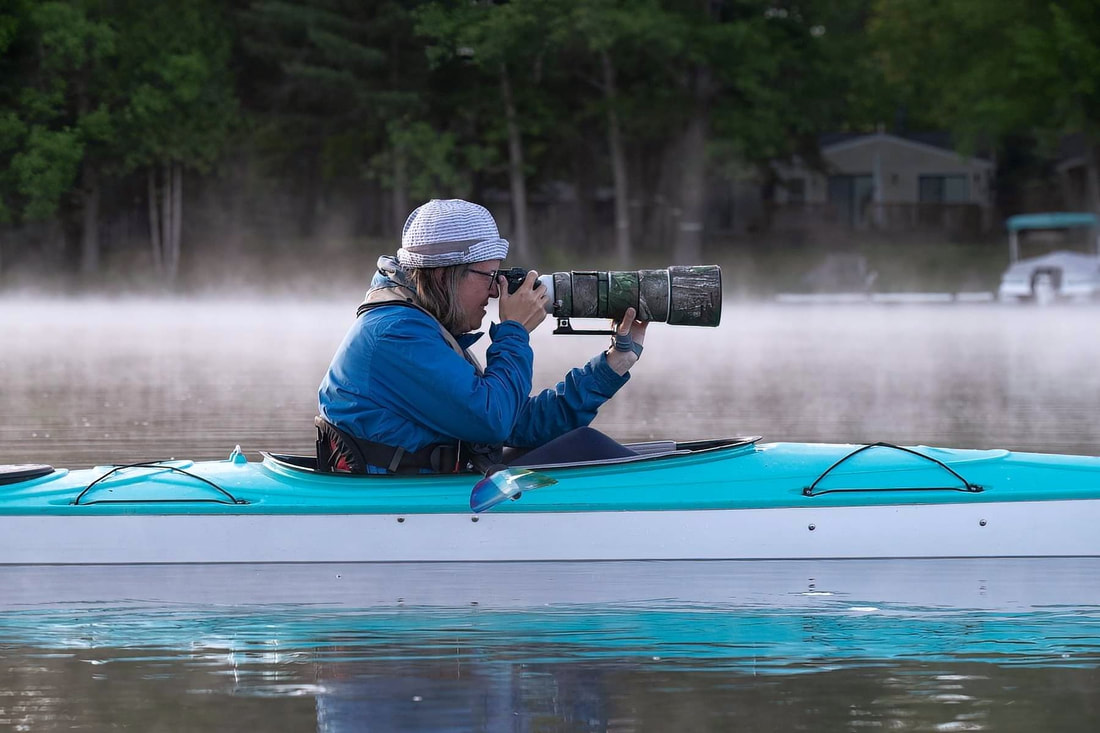|
The aurora borealis made an appearance in Michigan this past Monday, September 18, 2023. Newaygo County resident Jen Selwa spent the day Monday evaluating several sources and locations in preparation for the event to photograph. She decided upon her favorite: a couple of local Newaygo County lakes, since the wind was predicted to be calm and she hoped that the reflection would be captured on camera. Most aurora borealis forecasts can be made a couple of days in advance, but the intensity and length sometimes is harder to predict. Selwa relies on several sources, including a traditional weather forecast for clear or cloudy skies, whether the moon will be in the night sky (the brightness will diminish the aurora), spaceweather.com (there is a free app for your phone as well), and a Facebook group called Michigan Aurora Chasers. A question that Selwa often gets is the best location to view the aurora and most importantly, what time. Her advice is this: "Getting away from artificial light sources is very important. Look for a dark, north facing location such as a field, lake, or on top of a hill above a tree line. The aurora ebbs and flows slowly, so bring a couple lawn chairs, snacks, and patience for the evening show. Using the resources above will help you also become a predictor of the aurora borealis." Another question that Selwa is often asked is whether or not the aurora that appears in her images is what you actually see in person. The human eye views the northern lights generally in faint colors and as shades of grey and white. Our eyes are designed with cones and rods. The cones work mainly during the day and the rods work mainly at night. The light is too faint to be sensed by the color-detecting cone cells. DSLR camera sensors don’t have the same limitation as our eyes. Combined with the long exposure times and high ISO settings of modern cameras, the conclusion is that the camera sensor has a much higher dynamic range of vision in the dark than us. Newer model cell phones are now also capable of picking up the aurora with practice. An exposure time of 10-15 seconds is typical, with a high ISO and a fast lens (low F-stop number). A tripod is mandatory for a DSLR camera and highly recommended for cell phone users.
Jen Selwa has been a resident of Newaygo County for 20 years. A licensed drone pilot, she recently won the 2023 West Michigan Tourist Association Photo Contest Lake/Beach/Lighthouse category with her drone image of Little Sable Lighthouse. Selwa is also a Michigan State Parks Photo Ambassador. Her varied photographic subjects of interest include lighthouses, birds, and astrophotography. You'll often find Selwa in a kayak, quietly paddling with her camera in hand and following her beloved loon families on a Newaygo County lake. She is offering a 2024 Common Loon calendar available for sale through her website, www.jenselwa.com, along with other prints (including the aurora borealis and a gallery dedicated to Newaygo County).
0 Comments
Your comment will be posted after it is approved.
Leave a Reply. |
Features and FunConcerts, Plays, Happenings, Local Recipes, Gardening, Entertainment, Charities, Fundraisers, upcoming events, Theater, Activities, Tech, and much more. Categories“We don’t have a choice on whether we do social media, the question is how well we do it.”
- Eric Qualman |
Photos from usarmyband, CarbonNYC [in SF!]




 RSS Feed
RSS Feed